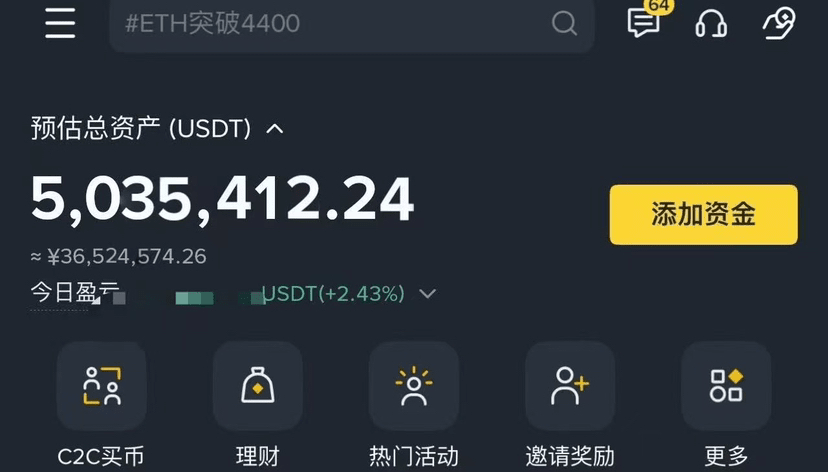One, Position and Leverage - Letting capital not die is the opportunity to live longer
1. Single trade risk exposure ≤ 1%-3% of total funds
• Assuming an account of 1 million U, the maximum allowable loss per trade is 10,000~30,000 U.
• This way, even with 5 consecutive losses, it only results in a 5%-15% drawdown, allowing for quick recovery.
2. Recommended leverage range of 2-5 times
• Large funds do not compete on leverage but on trend stability.
• Combining volatility with low leverage can also yield sufficient returns while ensuring resilience against single-direction risks.
3. Batch position building / batch closing
• Position building: split into 2-4 orders to enter the market, avoiding the risk of a single wrong point affecting the entire position.
• Closing positions: lock in part of the profits and allow the rest to let profits run.
⸻
Two, Risk Diversification - Hedging is not just about direction, but also about psychological pressure
1. Variety diversification
• Choose 2-3 varieties with good liquidity and different volatility logic (BTC, ETH, mainstream altcoins).
• Avoid concentration withdrawal due to abnormal fluctuations in a single cryptocurrency.
2. Directional diversification
• When the market is unclear, you can establish a two-way layout of different varieties (long ETH + short BTC, etc.) to reduce single-direction risks.
• When the trend is clear, you can heavily leverage in one direction, but it must be combined with low leverage.
3. Cycle diversification
• Combine intraday short positions with medium-short cycle orders to avoid full exposure to false signals at the same time level.
⸻
Three, Stop-Loss and Take-Profit - The larger the fund, the more 'ruthless' it needs to be
1. Fixed proportion stop-loss method
• Set stop-loss levels before opening each position and place orders directly.
• Do not set stop-loss based on feelings, avoid emotional interference.
2. Trailing stop to lock in profits
• When floating profits reach 2 times the initial stop-loss, move the stop-loss above the cost zone, turning the position into a 'sure-win position'.
3. Batch profit-taking method
• When reaching key target levels, first secure 50%-70% of the position, allowing the remaining position to let profits run.
• This way, you can lock in profits while participating at the trend's tail.
⸻
Four, Rhythm and Risk Control Daily Limits - Large funds must set 'stop-loss gates'
1. Daily loss limit
• Set a maximum daily loss limit (2%-3% of total funds) and stop immediately if reached.
• Prevent emotional chain errors.
2. Daily profit lock
• When daily profits exceed the target (e.g., total funds 3%-5%), you can take partial profits to rest, protecting the fruits of victory.
3. Do not chase losses, do not go all in
• A single loss for large funds may amount to hundreds of thousands; during a loss day, trade with small positions and slow pace.
⸻
Five, Execution and Psychological Building - Treat yourself as a fund manager
1. Create a trading plan
• Before opening each position, write down the logic, entry point, stop-loss point, and profit-taking point, and strictly execute according to the plan.
2. Win rate thinking > single trade profit and loss
• Do not pursue winning on every trade, only pursue long-term win rates + positive risk-reward ratios.
3. Patiently wait for signals
• If there are no high-probability opportunities, stay in cash; idle funds that do not lose are a gain.
⸻
Six, Golden Rules for Large Fund Contract Operations
Moderate position + risk diversification + hard stop-loss + disciplined execution = steady compound interest
• Do not underestimate the power of compound interest: a steady 10% profit in a month leads to over 3 times the capital in a year.
• Always remember: the fastest reason for large funds to die in contracts is excessive over-leverage + emotional trading.
